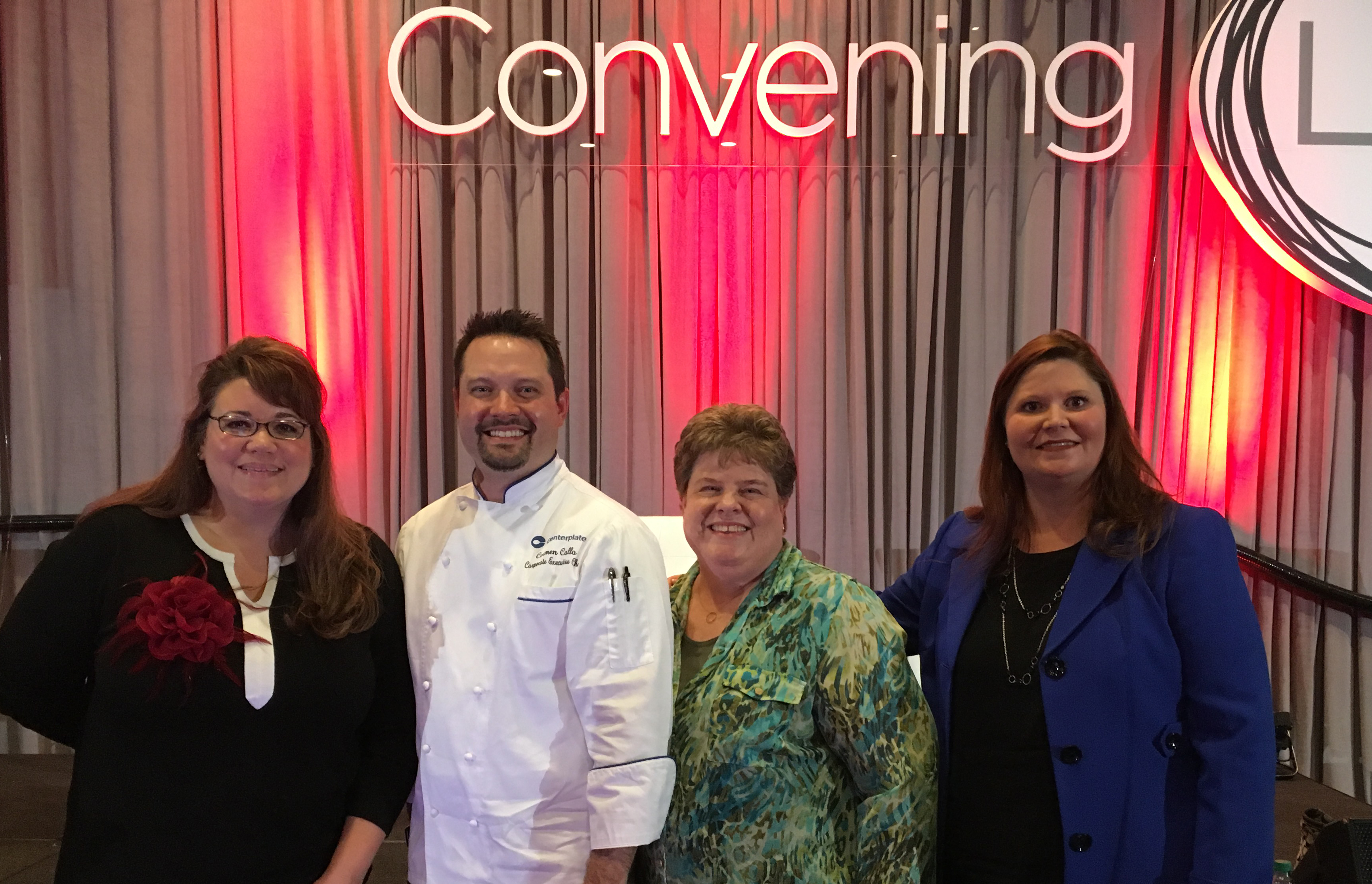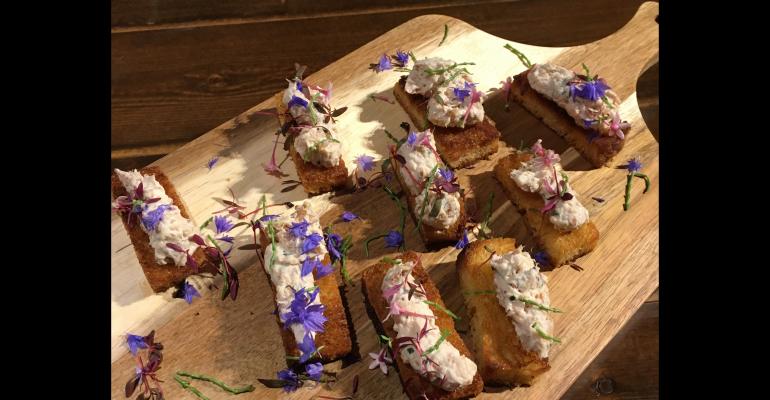One of the most popular sessions at the 2018 Professional Convention Management Association Convening Leaders conference this week in Nashville, Tenn., was a panel discussion on F&B issues and trends that meeting planners can expect to see in the year ahead.
Erin Brown, senior catering sales manager, Centerplate Catering; Carmen Callo, vice president and corporate executive chef, Centerplate Catering; and Darlene Somers, CMP, senior meetings manager for the Association Management Center, made up the panel, and the moderator, Missy Johnson, principal with MJM Meetings, kicked off the discussion by asking Chef Callo what flavors and trends he is seeing and what issues he is expecting for the year ahead.
Callo’s list of hot ingredients included chick peas, beets, flower petals, and whole flowers in dishes like lavender-imbued desserts. He also said, “Pickling is exploding! We are pickling everything these days, including corn and tomatoes, and it is so healthy.” He said bold flavors, including dried or roasted chilies are popular, but also problematic. “People don’t want hot food, but then they complain that the food is bland. If you have something hot, then have some milk shots on the food station to help people cool down.”
An audience member brought up food presentation trends, mentioning hanging walls of bacon, and Callo had two caveats on some of the wilder “plating” options. First, make sure that taste is the impact point for your food, even if you are choosing interesting presentations. And second, remember that there are fabrication costs associated with food displays, so make sure it is worth the investment. “Donut walls are doable, but there are costs,” he warned. Input from the audience suggests that planners are thinking in more practical terms for food presentation, for example soup shooters and crudité in cups at receptions so that attendees have their hands free to network and move around the room.
Erin Brown said that she is getting more requests from planners for plant-based proteins instead of meat, including lentils, curried cauliflower, tofu, and quinoa. She said that groups have been happy to try vegetarian and vegan menus so long as they still have options they are comfortable with. She warned, “Groups will eat vegan, but they want ranch dressing!”
Brown, who has celiac disease, confirmed that special dietary needs for attendees are not going away. Brown typically provides a self-serve bar for box lunches for people with allergies and other dietary restrictions, but it can be cause food envy—other attendees suddenly decide they want to self-serve, too. Darlene Somers got a laugh from the audience when she said, “I call these people spontaneous vegetarians,” but it hit a nerve with an audience being asked to provide meals for a broader spectrum of tastes. Somers said self-selection and personalization is a real trend. “Your attendees’ world is 100 percent customizable,” she said. “They can finish the movie they were watching on the plane in a smart hotel room set up with their Netflix account. If we are clear about labeling, we can let them customize their food as well.”
Another trend that came from the audience was the increase in service charges, with one planner complaining that charges in New Orleans had gone up by 26 percent. Callo agreed that labor is always the most expensive part of F&B, but said there is a shortage of cooks so restaurants have to attract and keep talent. One positive trend he mentioned, “Restaurants are moving towards shared tipping to bridge the gap, so that you don’t have a waiter making $75,000 a year and a chef making $18,000.”
Increasing food costs and decreasing budgets featured in a lot of audience questions. The panel’s tips for managing costs included:
• Know your audience. Are they tea drinkers or coffee drinkers? Do they want health food or red meat? Don’t spend money on something the attendees don’t care about.
• Can you skip the booze? Do you really need cocktails or can you serve artisanal (and healthy) fruit mocktails? One audience member described a mocktail backpack, where a bartender walked around refilling drinks literally from a container on his back. You can make the event fun and memorable without paying for an open bar.
• Balance the day’s menus. If you have an expensive sit-down lunch, choose a fun evening with food trucks or local specialties for dinner.
• Communicate with your F&B providers. Johnson said, “It should not be a contest to fight for lower prices, it should be a partnership.” Chef Callo added, “Our worst-case scenario is when we make suggestions and the planner says ‘no’ but doesn’t give a reason. If we don’t get any feedback, we can’t help you.”
• It never hurts to ask. If you want something but assume it is too specialized to fit within the budget, bring it up anyway. Caterers may have had the request multiple times and can offer it affordably.
• Social media brainstorming. If you’re out of ideas, look on Pinterest, especially if you have Millennials at your event. Pinterest has had a 46 percent increase of food and drinks pins on the site, more than home décor and fashion combined. New ideas are not necessarily more expensive ones. Somers warned, “We get jaded about food because we travel and try cool things all the time, but our attendees might not and they are into food. Give them food that’s Instagram-worthy, and you will get your conference out on social media.

PCMA's food trends panel: (from left) Missy Johnson, CMP; Chef Carmen Callo; Darlene Somers, CMP; and Erin Brown





